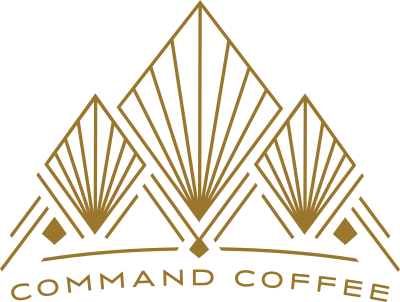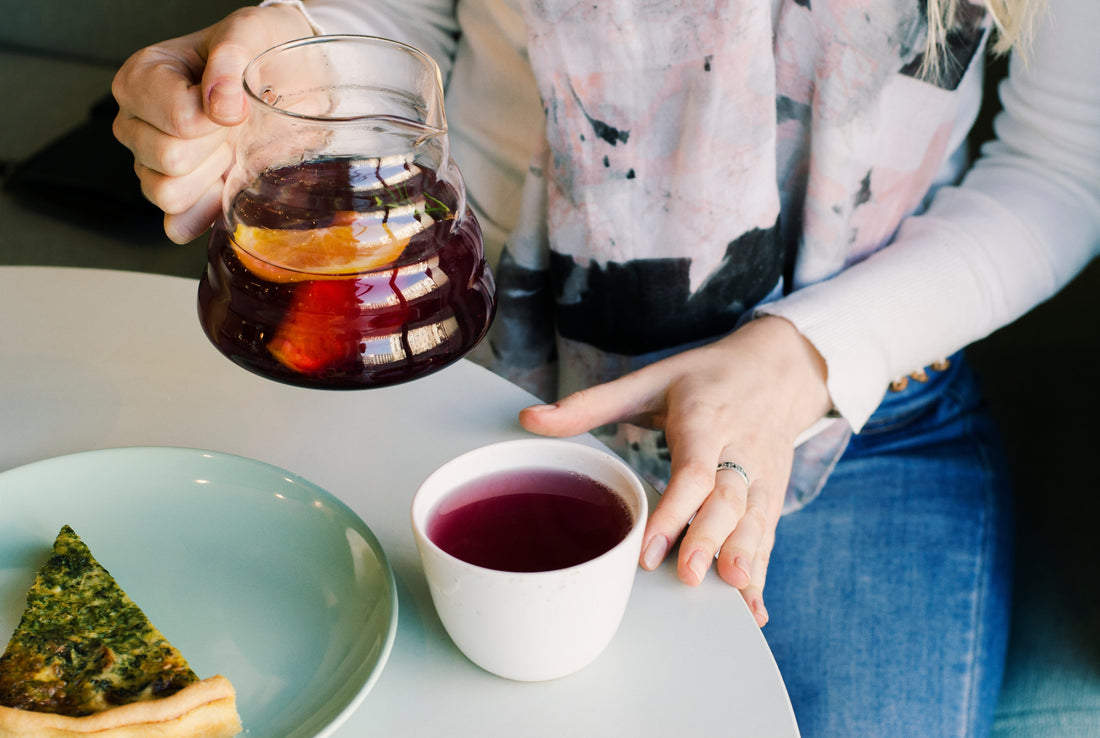Americans love our caffeinated drinks. Our daily coffees, energy drinks, teas, sodas, and even caffeinated water drinks. Collectively, we drink a lot of caffeine. We drink our double espresso, London fog lattes, and Red Bulls, and take our caffeine pills. Is it too much? Probably not. The dangerous level of caffeine intake varies from person to person. Still, the FDA agrees that for healthy adults anything under 400 mg of caffeine, roughly four or five cups of coffee or two energy drinks, is a safe amount. Despite being safe, and even linked to some health benefits, you may want to cut back on your caffeine intake. There are plenty of reasons to cut back on caffeine: poor reactions to medication, pregnancy, sleep disruption, it’s too late in the day, and the list goes on.
If you still want the positive energy and fun vibes of the coolest coffee shop in Indianapolis, but don’t want the energy boost, you have options. There are plenty of low-caffeine drinks or caffeine-free drinks to order at your local coffee shop.
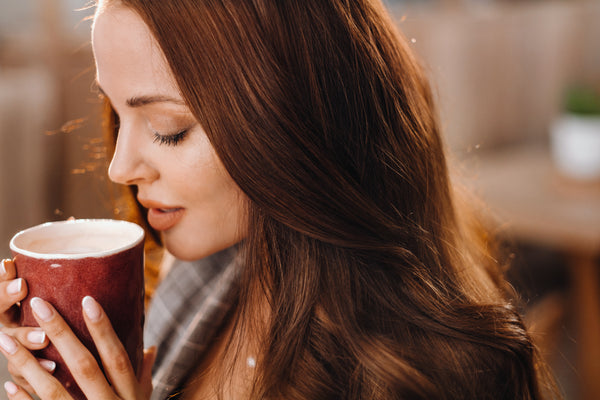
What is Caffeine?
Caffeine is a naturally occurring substance found in over sixty different plants including leaves and nuts. These plants include Cocoa beans, used for chocolate; the coffee plant; the cola tree; Guarana seeds, often used in energy drinks; tea plants; and Yerba Mate. Caffeine is absorbed into the bloodstream and travels to the brain where it fills its role as a central nervous system stimulant. Caffeine can increase energy, focus, and alertness. However, it can affect everyone differently. Some folks are more sensitive, whereas others don’t feel any effects until their third cup of coffee.
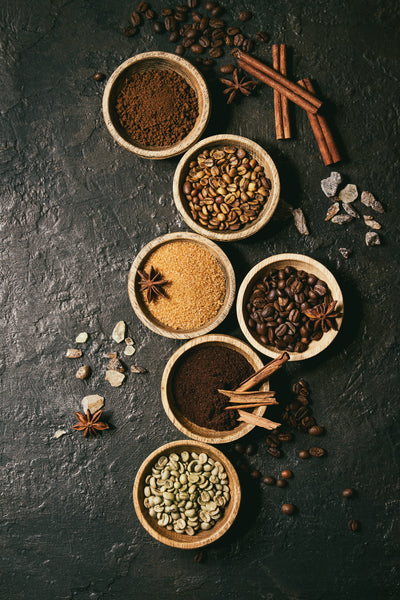
What Determines Caffeine Content?
The average cup of coffee contains around 95 mg of caffeine. Comparing different cups of coffee, the caffeine content can range from zero to over 400 mg, and over the recommended daily caffeine intake. Tea also has a wide range, from zero to around 70 mg per cup.
One of the biggest factors that differentiates a high-caffeine drink from a low-caffeine drink is the size of the drink. While “cup” is technically a measurement, of 8 ounces, it’s become a colloquial synonym for “any size coffee or tea or anything else.” A large, 20 oz coffee from a coffee shop is the equivalent of two and a half cups. Obviously, the more beverage there is, the higher the caffeine content.
Other than the size of the drink, caffeine content is determined by the type of coffee beans or tea leaves used, the brewing style and steeping time, and the roast of the coffee beans.
Types of Plants: Different varieties of coffee plants and tea plants have different amounts of caffeine. The choice of bean or leave provides the baseline for caffeine content. Teas can even be made with other parts of the plant including the stems or buds, providing further variation in the amount of caffeine in tea.
Roasting: Coffee roast has some impact on the amount of caffeine. While a lighter roasted coffee tends to have a less bold flavor, it generally has a higher caffeine content than a dark roast will.
Brewing style: If you steep your tea for only a short amount of time the final product will contain less caffeine than if steeped for the full recommended time. With coffee, how you prepare the drink affects the caffeine content. Regularly brewed coffee has a wide range of caffeine content, averaging close to 100 mg per 8 ounces. Shots of espresso are more concentrated, so a single shot can contain around 60 mg. Instant coffee contains less than regular coffee, and even decaf coffee has some caffeine (an average of 3 mg per cup).
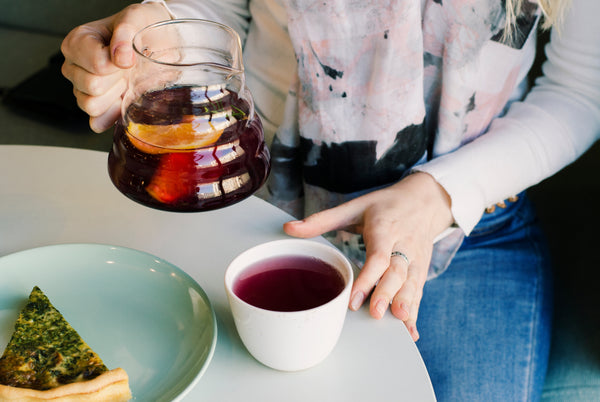
Options for Low-Caffeine Drinks
In relation to coffee, your best option for a low-caffeine drink is decaf coffee. Or if you’re just looking to cut back, consider ordering a half-caf - a simple 50/50 blend of decaf and regular coffee. Other low-caffeine options include hot chocolate, which contains around 5- 10 mg. But, if you're looking for teas low in caffeine, you have many more options. If you need to carefully monitor your caffeine intake, be sure to ask your barista for health and nutrition information. It is hard to determine the exact amount of caffeine in a coffee shop drink, but that information will give you a good idea.
What Teas are Low in Caffeine
It’s a challenge to generalize the caffeine content of tea. Even among types of tea: black, green, and herbal there’s plenty of variety. One of the most common tea myths is that black tea always contains more caffeine than green, but that’s simply not true. What is true is that there’s more variation with tea and caffeine than there is with coffee.
Any teas that come from the tea plant will have some level of caffeine, although it may be minimal. Herbal or fruit teas are two varieties of teas low in caffeine. These teas are not made from the same plant as black or green teas and therefore fall under the category of caffeine-free drinks.
If you want to replace your London fog latte with its 40 mg of caffeine with something that might make you a little less jittery, try an herbal or fruit tea. Herbal teas include chamomile tea (often known for its relaxing effect and used as a sleep aid), peppermint, hibiscus, and ginger. Popular varieties of fruit teas include pomegranate, peach, and berry, and availability in your local coffee shop can vary based on season and location. Fruit teas are especially delicious iced.
Teas, like coffee, can also be decaffeinated. Even the earl grey tea used in London fog drinks that usually contain between 55- 90 mg can be decaffeinated to have only 2-10 mg. If you’re not quite ready to give up your favorite coffee shop drink, you can always ask your favorite coffee shop if they have a caffeine-free drink replacement. Command Coffee takes pride in our customer service and will be glad to offer whatever low or no-caffeine beverages we can when you visit. You can still appreciate a good coffee shop without needing to consume caffeine, or even drink coffee.
